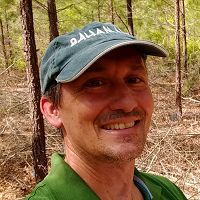Brecheisen et al., 2018
A tale of two CZ’s: Comparing shallow and deep old-field forest regeneration at the Calhoun CZO
Brecheisen Z., Richter D., Cook C., and Heine P. (2018)
Goldschmidt Conference, Boston, MA, 12-17 August 2018
-
Calhoun, GRAD STUDENT
-
Calhoun, INVESTIGATOR
-
Calhoun, STAFF
-
Calhoun, STAFF
Abstract
Plot-based field investigations were undertaken at the Calhoun Critical Zone Observatory (CCZO) to determine how different critical zone measurements are able to quantify the vertical propagation of forest regeneration downward into soil profiles. The below-ground effects of 60-80 years of oldfield forest succession in the CCZO were explored via a chronosequence landuse history study. Chronosequence plots consist of reference hardwood forests, plowed agricultural fields, and old-field secondary pine forests recapitulating the history of landuse in the southeastern US. In this framework, reference hardwood soil profiles are minimally degraded in terms of erosion, soil structure, and soil biogeochemistry while currently cultivated agricultural plots are maximally impacted. Old-field secondary pine forests are considered to be intermediate and partially regenerated in terms of soil structure and function as reforestation has occurred and proceeded for decades, though the degree of regeneration was uncertain. Each landuse history comparison plot has been studied above and below-ground.
Results indicate that while there has been a high degree of soil regeneration above the B-horizon in old-field secondary forest soils in terms of rooting, respiration dynamics, and soil structure, deep CZ processes below 2m remain significantly altered under old-field pine forests. Hardwood forest soils have higher CO2 concentrations and lower O2 below 2m soil depth, than either agricultural plots or old-field pine forests, reflective of greater root activity and respiration under those forests. This suggests that there may be a lag in deep soil below-ground regeneration relative to aboveground or surficial soil regeneration. This appears to be due the hindering of root and macropore regeneration by a thick, low permeability, B-horizon. Storm events which affected all treatments were also investigated as rapid declines in CO2 concentrations were observed deep in soil profiles during periods of intense precipitation. This is presumably due to CO2 dissolution and export into groundwater and indicates great potential to advance our understanding of how upland management and landcover are linked to soil respiration and deep CZ mineral weathering and the export of terrestrially-derived CO2 to streams.
Citation
Brecheisen Z., Richter D., Cook C., and Heine P. (2018): A tale of two CZ’s: Comparing shallow and deep old-field forest regeneration at the Calhoun CZO. Goldschmidt Conference, Boston, MA, 12-17 August 2018.
 This Paper/Book acknowledges NSF CZO grant support.
This Paper/Book acknowledges NSF CZO grant support.
Explore Further




